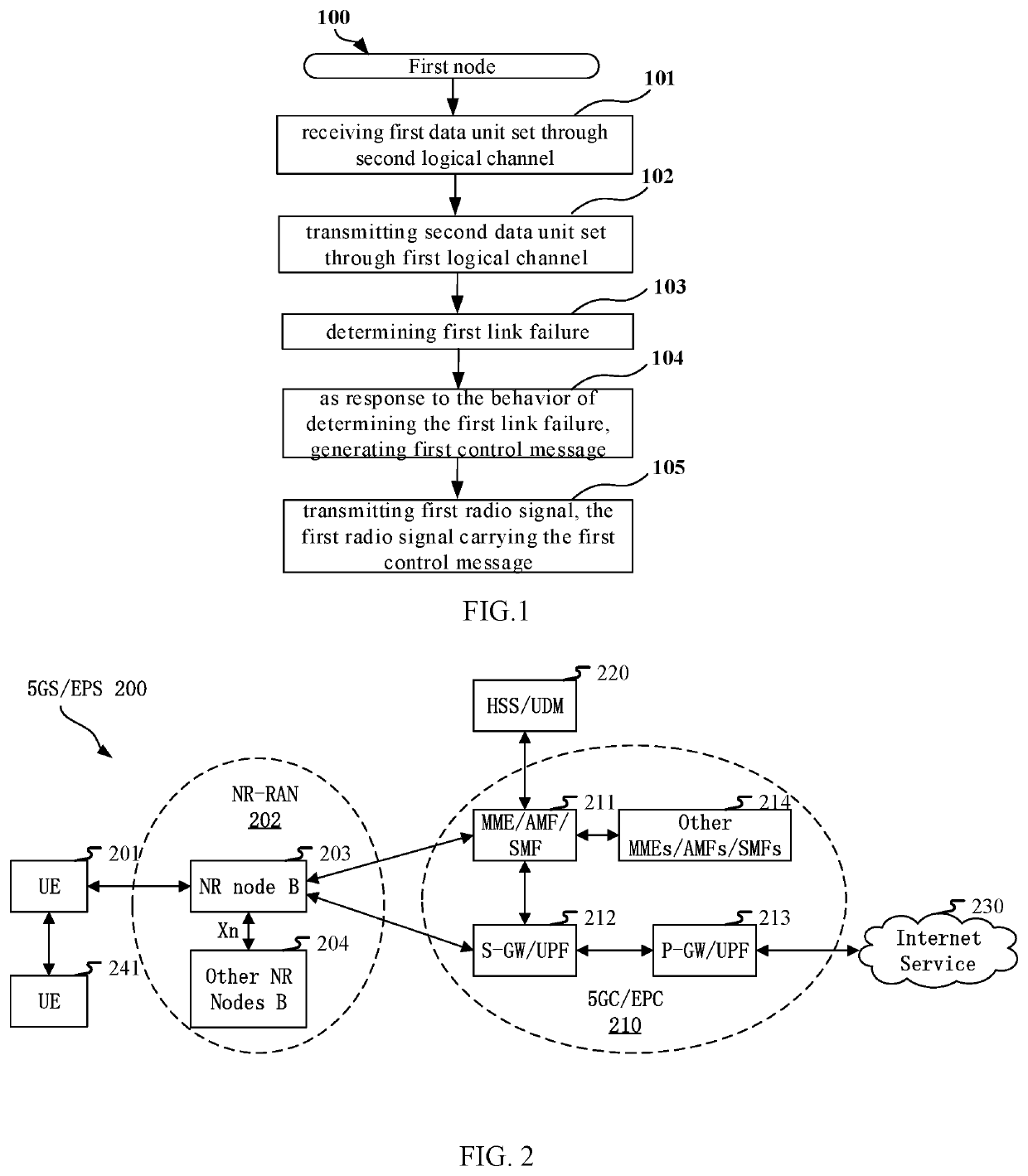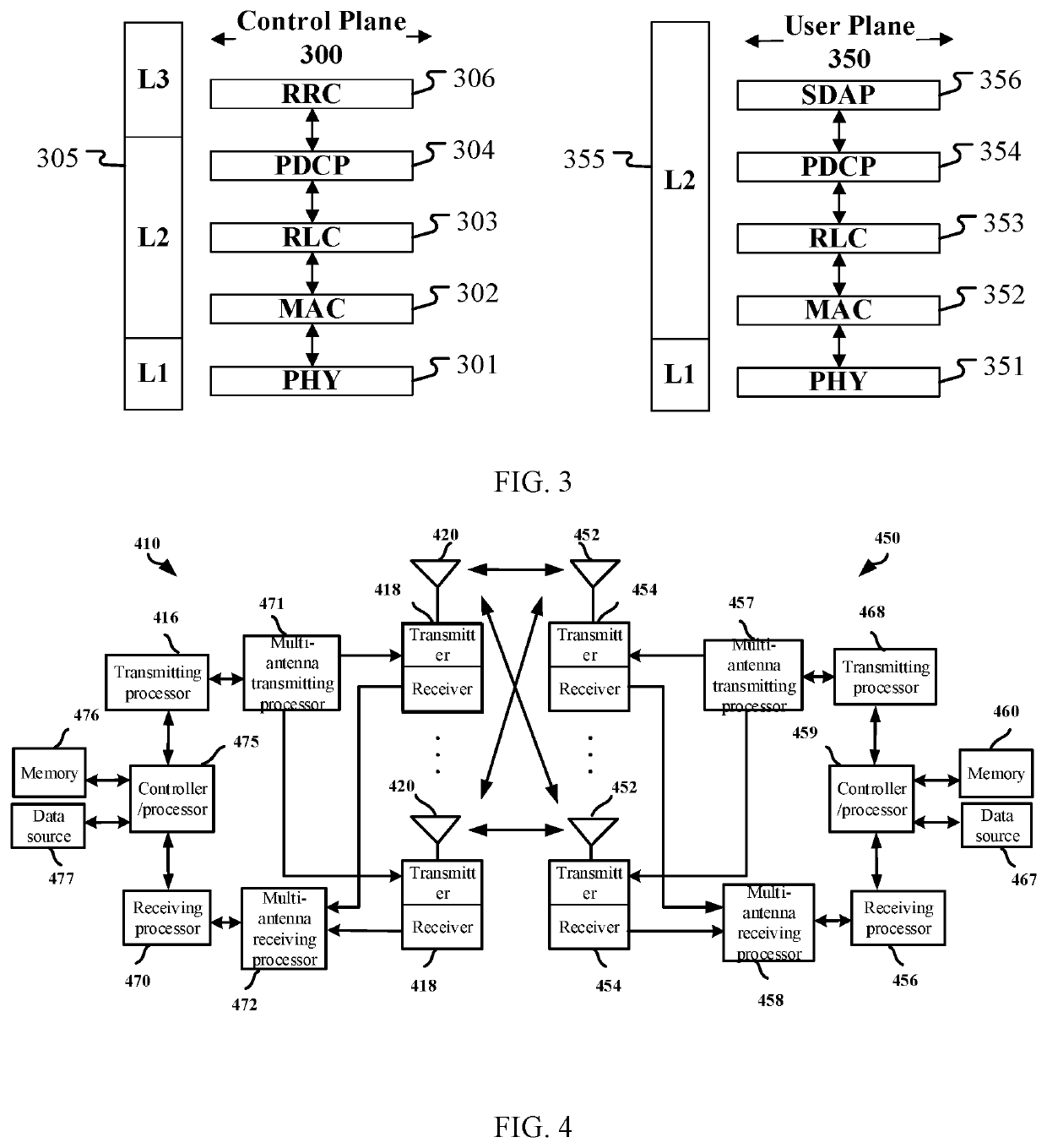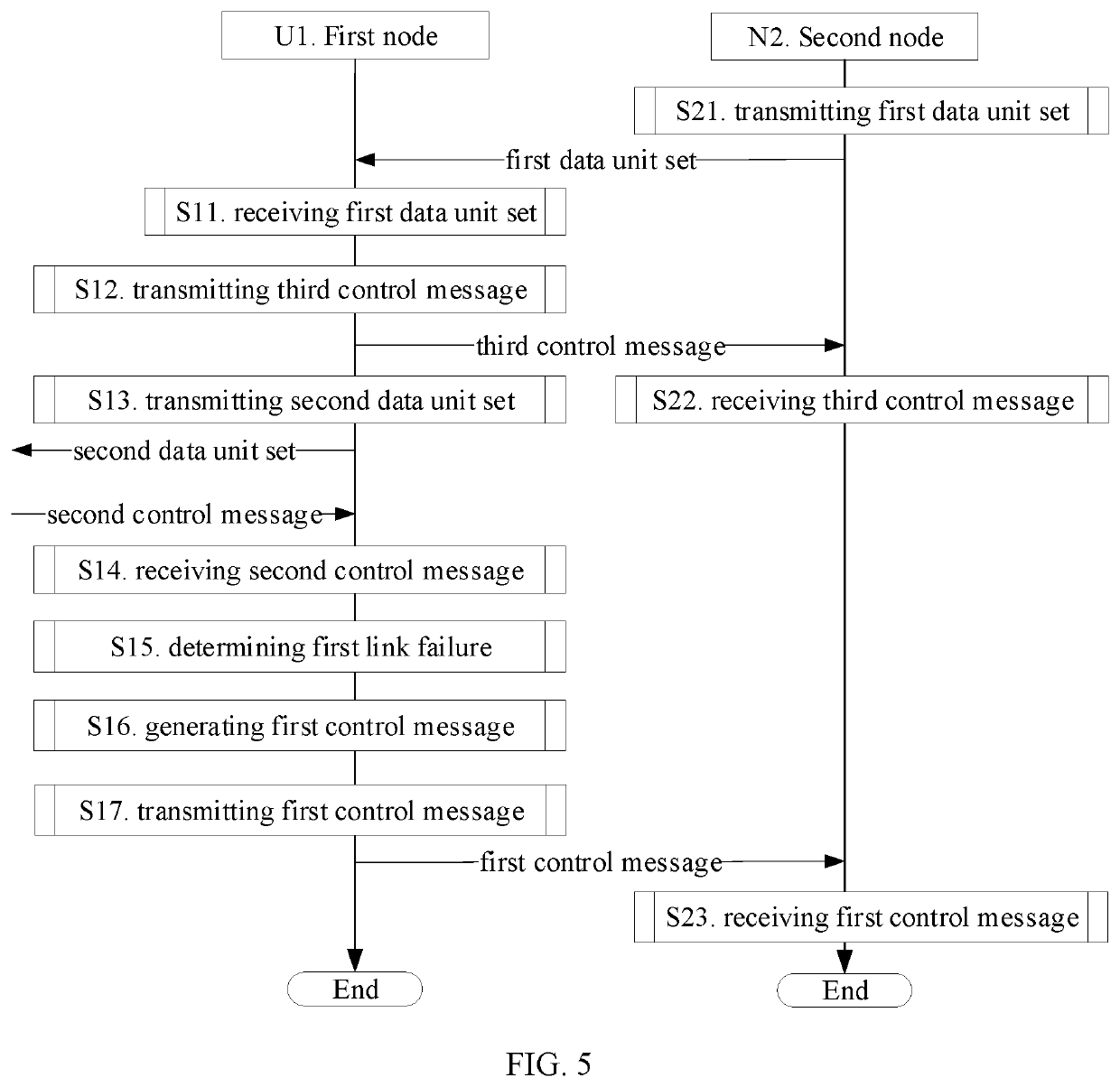Method and device used for relay wireless communication
a wireless communication and relay technology, applied in the field of wireless communication systems, can solve the problems of packet loss or higher-layer retransmission, reducing traffic quality, etc., and achieve the effect of shortening transmission delay and reducing packet loss
- Summary
- Abstract
- Description
- Claims
- Application Information
AI Technical Summary
Benefits of technology
Problems solved by technology
Method used
Image
Examples
embodiment 1
[0082]Embodiment 1 illustrates a flowchart of transmission of a first node according to one embodiment of the present disclosure, as shown in FIG. 1.
[0083]In Embodiment 1, a first node 100 receives a first data unit set through a second logical channel in step 101; transmits a second data unit set through a first logical channel in step 102; determines a first link failure in step 103; as a response to the behavior of determining the first link failure, generates a first control message in step 104; transmits a first radio signal in step 105, the first radio signal carrying the first control message; herein, the first data unit set comprises at least one data unit; the second data unit set comprises at least one data unit; the first control message is used to indicate that a third data unit set is not successfully transmitted; any data unit in the third data unit set belongs to the first data unit set; any bit in the second data unit set belongs to the first data unit set; and a dat...
embodiment 2
[0166]Embodiment 2 illustrates a schematic diagram of a network architecture according to one embodiment of the present disclosure, as shown in FIG. 2. FIG. 2 is a diagram illustrating a network architecture 200 of 5G NR, Long-Term Evolution (LTE), and Long-Term Evolution Advanced (LTE-A) systems. The NR 5G, LTE or LTE-A network architecture 200 may be called a 5G System (5GS) / Evolved Packet System (EPS) 200 or other appropriate terms. The 5GS / EPS 200 may comprise one or more UEs 201, an NG-RAN 202, a 5G-Core Network / Evolved Packet Core (5GC / EPC) 210, a Home Subscriber Server (HSS) / Unified Data Management (UDM) 220 and an Internet Service 230. The 5GS / EPS 200 may be interconnected with other access networks. For simple description, the entities / interfaces are not shown. As shown in FIG. 2, the 5GS / EPS 200 provides packet switching services. Those skilled in the art will readily understand that various concepts presented throughout the present disclosure can be extended to networks p...
embodiment 3
[0183]Embodiment 3 illustrates a schematic diagram of a radio protocol architecture of a user plane and a control plane according to one embodiment of the present disclosure, as shown in FIG. 3. FIG. 3 is a schematic diagram illustrating an embodiment of a radio protocol architecture of a user plane 350 and a control plane 300. In FIG. 3, the radio protocol architecture for the control plane 300 of a UE and a gNB is represented by three layers, which are a layer 1, a layer 2 and a layer 3, respectively. The layer 1 (L1) is the lowest layer and performs signal processing functions of various PHY layers. The L1 is called PHY 301 in the present disclosure. The layer 2 (L2) 305 is above the PHY 301, and is in charge of the link between the UE and the gNB via the PHY 301. L2 305 comprises a Medium Access Control (MAC) sublayer 302, a Radio Link Control (RLC) sublayer 303 and a Packet Data Convergence Protocol (PDCP) sublayer 304. All the three sublayers terminate at the gNBs of the netwo...
PUM
 Login to View More
Login to View More Abstract
Description
Claims
Application Information
 Login to View More
Login to View More - R&D
- Intellectual Property
- Life Sciences
- Materials
- Tech Scout
- Unparalleled Data Quality
- Higher Quality Content
- 60% Fewer Hallucinations
Browse by: Latest US Patents, China's latest patents, Technical Efficacy Thesaurus, Application Domain, Technology Topic, Popular Technical Reports.
© 2025 PatSnap. All rights reserved.Legal|Privacy policy|Modern Slavery Act Transparency Statement|Sitemap|About US| Contact US: help@patsnap.com



